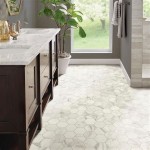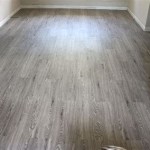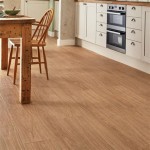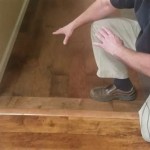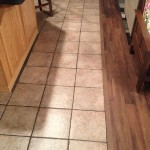How To Fix Laminate Flooring That Is Lifting
Laminate flooring, known for its durability and aesthetic appeal, can occasionally experience issues such as lifting. Several factors can contribute to this problem, ranging from moisture exposure to improper installation. Addressing lifting laminate requires a systematic approach to identify the root cause and implement the appropriate repair strategy. This article outlines the common causes of lifting laminate flooring and provides comprehensive instructions on how to effectively address and rectify the problem.
Identifying the Cause of Lifting Laminate Flooring
Pinpointing the reason behind the lifting is crucial for selecting the correct repair method. Failure to diagnose the underlying issue can result in temporary fixes that don't solve the problem long-term, potentially leading to recurring issues and escalating repair costs. The most frequent causes of lifting laminate flooring include moisture, improper installation, and subfloor irregularities.
Moisture Exposure: Laminate flooring is susceptible to damage from excessive moisture. Water spills, leaks from appliances or plumbing, and high humidity levels can all penetrate the seams of the laminate planks, causing them to swell and lift. This is because the core of most laminate flooring is made of high-density fiberboard (HDF) or medium-density fiberboard (MDF), both of which are highly absorbent. When moisture enters the core, it expands, leading to warping and lifting.
Signs of moisture-related lifting often include: buckling or cupping of the planks, discoloration along the seams, and a musty odor emanating from the flooring. In severe cases, mold may also develop underneath the laminate, requiring professional remediation.
Improper Installation: Even high-quality laminate flooring can fail if it is not installed correctly. Common installation errors that contribute to lifting include inadequate expansion gaps, failure to use a moisture barrier, and improper locking of the planks. Laminate flooring needs room to expand and contract with changes in temperature and humidity. Without sufficient expansion gaps around the perimeter of the room and against any vertical obstructions (like pipes or door frames), the flooring will be forced to buckle and lift as it expands.
A moisture barrier is also essential, especially in basements or over concrete subfloors, where moisture levels are typically higher. The barrier prevents moisture from migrating up through the subfloor and damaging the laminate. Furthermore, if the planks are not properly locked together during installation, they can separate over time, creating gaps that allow moisture to penetrate and cause lifting.
Subfloor Irregularities: The subfloor provides the foundation for the laminate flooring. If the subfloor is uneven, damaged, or not properly prepared, it can cause the laminate to lift. Dips, bumps, and cracks in the subfloor can create stress points on the laminate, leading to uneven wear and eventual lifting. Additionally, if the subfloor is not clean and free of debris, the laminate planks may not adhere properly, resulting in movement and lifting.
Before installing laminate flooring, it's crucial to inspect the subfloor and address any imperfections. This may involve leveling the subfloor with a self-leveling compound, repairing cracks and holes, and ensuring that the surface is clean and dry.
Addressing Minor Lifting Issues
Minor lifting can often be remedied without replacing entire sections of flooring. Several techniques can be employed to address small areas of lifting, focusing on re-securing the planks and preventing further damage. These methods include using adhesive, applying weight, and addressing minor moisture issues.
Using Adhesive: For small areas where the laminate is only slightly lifted, applying a small amount of laminate-specific adhesive can be effective. First, clean the area thoroughly, removing any dirt or debris from beneath the lifted plank. Use a putty knife or similar tool to gently lift the edge of the plank and apply a thin bead of adhesive along the subfloor and the underside of the plank. Press the plank firmly into place and wipe away any excess adhesive with a damp cloth. Place a heavy object (such as a book or weight) on top of the repaired area for several hours to allow the adhesive to fully cure.
It's crucial to use an adhesive that is specifically designed for laminate flooring. Other types of adhesives may damage the laminate or not provide a strong enough bond.
Applying Weight: In some cases, simply applying weight to the lifted area can help to flatten the plank and re-establish contact with the subfloor. This method is most effective for minor lifting caused by slight subfloor irregularities or temporary moisture exposure. Clean the lifted area and place a heavy object on top of it. The weight should be distributed evenly across the affected area. Leave the weight in place for at least 24 hours, or longer if necessary, to allow the plank to settle back into place.
To protect the surface of the laminate, place a soft cloth or towel between the weight and the flooring.
Addressing Minor Moisture Issues: If the lifting is caused by minor moisture exposure, removing the source of the moisture and allowing the area to dry completely can sometimes resolve the problem. Identify and repair any leaks or spills that may be contributing to the issue. Use a dehumidifier to reduce humidity levels in the room, particularly in basements or other areas prone to dampness. Once the area is completely dry, the laminate may settle back into place on its own. If not, you can try applying weight or using adhesive to re-secure the plank.
Ensure proper ventilation in the room to prevent moisture buildup. Open windows and doors whenever possible, and use exhaust fans in bathrooms and kitchens.
Addressing Major Lifting Issues and Replacement
When lifting is extensive or accompanied by significant damage, such as warping, buckling, or mold growth, simple repairs may not suffice. In these cases, replacing the affected planks or sections of flooring is often the most effective solution. This involves carefully removing the damaged planks and installing new ones that match the existing flooring.
Identifying the Affected Area: Before beginning the replacement process, carefully assess the extent of the damage. Identify all of the planks that need to be replaced, paying attention to any areas where the lifting is particularly severe or where there is visible damage. It may be necessary to remove several rows of planks to properly address the issue.
Removing Damaged Planks: The process of removing damaged planks depends on the type of locking system used in your laminate flooring. In most cases, you will need to use a pry bar or similar tool to gently lift the planks from the subfloor. Start at the edge of the affected area and work your way inward. Be careful not to damage the adjacent planks during the removal process.
For planks that are difficult to remove, you may need to use a utility knife to cut along the seams. This will help to loosen the planks and make them easier to lift. Wear safety glasses and gloves to protect yourself from injury.
Preparing the Subfloor: Once the damaged planks have been removed, thoroughly inspect the subfloor. Clean the area, removing any debris, dust, or adhesive residue. If the subfloor is uneven or damaged, you may need to repair it before installing the new planks. This may involve leveling the subfloor with a self-leveling compound or patching any cracks or holes.
Ensure that the subfloor is clean, dry, and level before proceeding with the installation.
Installing New Planks: To ensure a seamless match, obtain replacement planks that are identical to the existing flooring in terms of color, texture, and thickness. Follow the manufacturer's instructions for installing the new planks, paying close attention to the locking mechanism and ensuring that the planks are properly aligned. Use a tapping block and a hammer to gently tap the planks into place. Leave adequate expansion gaps around the perimeter of the room and against any vertical obstructions.
When installing new planks, start at the edge of the repaired area and work your way outward. Use a level to ensure that the planks are installed evenly.
Preventative Measures: After completing the repairs, take steps to prevent future lifting issues. This includes addressing any underlying moisture problems, ensuring proper ventilation, and avoiding excessive water spills or leaks. Consider using furniture pads to protect the flooring from scratches and dents. Regularly inspect the flooring for any signs of damage or wear, and address any issues promptly.
Regular cleaning and maintenance can also help to prolong the life of your laminate flooring. Sweep or vacuum the flooring regularly to remove dirt and debris. Use a damp mop with a laminate-specific cleaner to clean the flooring as needed. Avoid using excessive water or harsh chemicals, as these can damage the laminate. By taking these preventative measures, you can help to keep your laminate flooring looking its best for years to come.

How To Fix Vinyl Plank Flooring That Is Lifting Or Buckling

How To Fix Laminate Flooring That Is Lifting And Why It Happens Gc Pros

How Can I Fix A Laminate Flooring That Is Delaminating Hometalk
Why You Should Consider Staggering Laminate Flooring When Installing

How To Fix Vinyl Plank Flooring That Is Lifting Whole Cabinet Supply

Lifting Laminate Flooring Expansion Problem Buckling Wood

Effortless Flooring Installations With Roberts Tools

Laminate Faqs Bouncy Floors Lifting Maintenance And More
Yes Mold Can Grow Under Laminate Flooring Here S What You Need To Know

Laminate Flooring Repair To Fix Soft Spot For Uneven Underlayment
Related Posts


